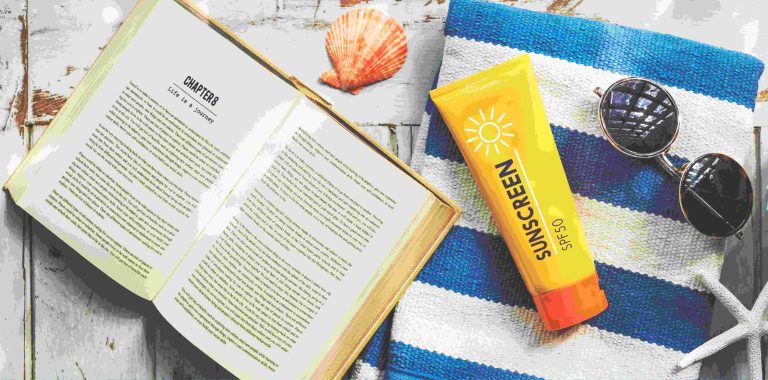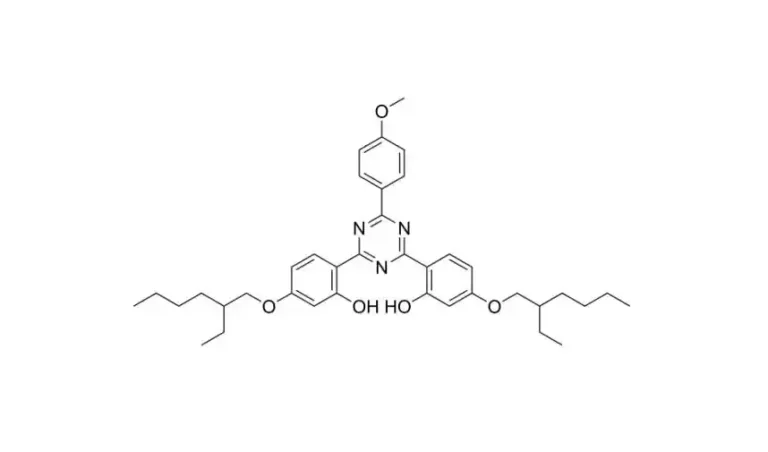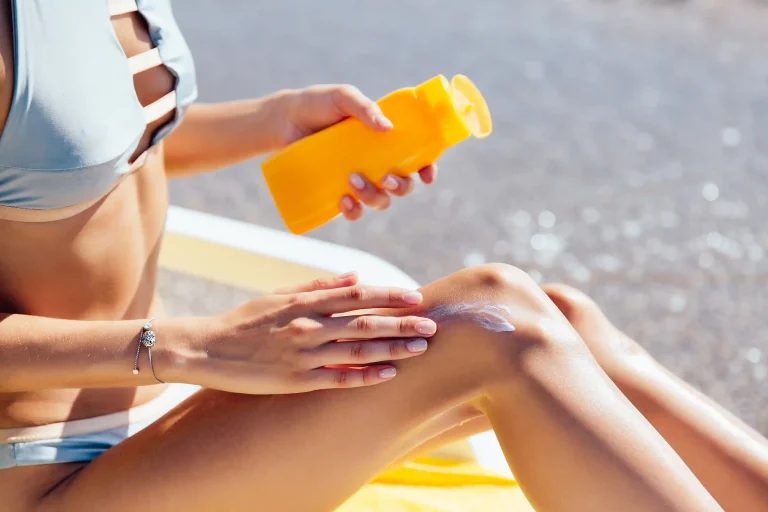الهيكل الكيميائي والوظائف Octocrylene
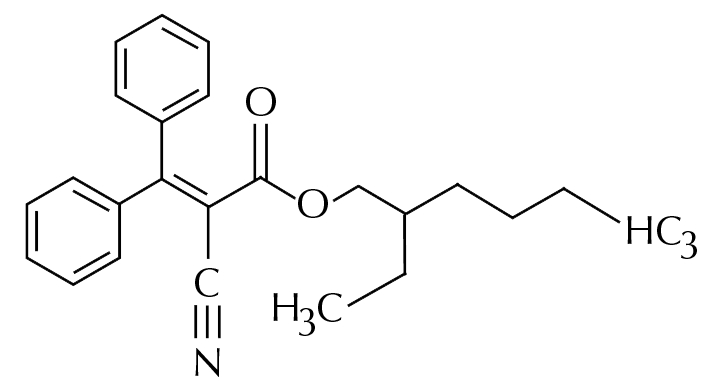
Octocrylene هو واقي الشمس الدهني المستخدم في واقي الشمس ومنتجات العناية الشخصية الأخرى. Octocrylene هو في المقام الأول واقي UVB مع حماية UVA ضعيفة. ونتيجة لخصائصه الكيميائية، يمكن استخدام أوكتوكريلين لتثبيت مكونات تركيبة الشمس الأخرى، وخاصة أفوبنزون، عن طريق تقليل معدل تدهورها عندما تتعرض المنتجات لأشعة الشمس. أوكتوكريلين’ الاستقرار الضوئي يجعله أداء ممتازا في منتجات الحماية من الشمس واسعة الطيف المقصودة للحماية من الشمس طويلة المدى.
فوائد أوكتوكريلين كمادة خام في واقي الشمس
يعزز Octocrylene مقاومة الماء لمواقي الشمس ويوفر لهم نسيج ناعم وغير دهني. أوكتوكريلين خامل مع أي مكون تجميلي آخر ويمكن استخدامه بأمان في الرذاذ والهلام والكريمات. يوفر Octocrylene حماية ضد حروق الشمس وتلف الجلد الناجم عن الإشعاع فوق البنفسجي الموجة القصيرة من خلال امتصاص إشعاع UVB.
الاستخدامات العامة وأشكال المنتجات التي تستخدم Octocrylene
كما يوجد أوكتوكريلين في مستويات عالية من التركيز في واقيات الشمس للجسم ، واقيات الشمس للوجه ، والمرطبات المضادة للتجاعيد التي تحتوي على SPF ، والمرطبات الملونة ، بالإضافة إلى بعض مستحضرات التجميل. الاستقرار الضوئي له هو أحد الأسباب التي تجعله اختيار موضعي من المكونات لمنتجات العناية بالشمس مع التعرض الطويل للأشعة فوق البنفسجية التي يمكن توقعها.
آليات تهيج الجلد المرتبطة بـ Octocrylene
التفاعل مع وظيفة حاجز الجلد
على الرغم من أنه آمن للجميع لاستخدامه بشكل عام ، فإن أوكتوكريلين هو مهيج للجلد لأولئك الذين يعانون من حواجز الجلد المكسورة. عندما يتم كسر حاجز الجلد - بسبب الجفاف أو الاحمرار أو التقشير المفرط - تخترق المواد الكيميائية مثل أوكتوكريلين بسهولة أكبر وتكون سبب التهيج أو التهاب الجلد بالتلامس الحساسي.
الاستقرار الضوئي وتشكيل المنتجات الثانوية تحت التعرض للأشعة فوق البنفسجية
في حين أن أوكتوكريلين يستقر واقي الشمس الأخرى ، مثل أفوبنزون ، فهي تتحلل بعد فترة من التعرض لإشعاع الأشعة فوق البنفسجية. من المرجح أن يؤدي التحلل إلى تشكيل البنزوفينون ، وهو أمر مثير للمشكلة لأنه من المرجح أن يتم العثور عليه من أصل مسبب للحساسية. وسوف تتراكم هذه المنتجات الجانبية ومن المرجح أن يكون لها القدرة على المساهمة في تعزيز التهاب الجلد الحساسي المتأخر عند الأفراد الضعفاء.
العوامل التي قد تزيد من الحساسية أو رد الفعل
نوع الجلد هو عامل مؤثر في كيفية استجابة المرء لأكتوكريلين. كما يتم إدخال المزيج للتعرض المتكرر والحرارة والرطوبة المحيطة والظروف الموجودة مسبقا مثل الوردية أو الأكزيما - كل هذه تساهم في زيادة الضعف للتهيج.
تصنيف وميزات أنواع الجلد
الجلد العادي
يحتوي على الدهنة وتوازن الرطوبة ؛ نادرا ما يهيج أو تقطيع.
الجلد الجاف
يفتقر أو يحتوي على الحد الأدنى من الزيوت الطبيعية. شرائح، هو ضيق، وهو أكثر حساسية.
الجلد الزيتي
لديه الكثير من الدهنة؛ عادة ما يرافقها مسام كبيرة وبشرة تشبه حب الشباب.
جلد مزيج
يحتوي على أقسام زيتية (عادة منطقة تي) وجافة على بقية الوجه.
بشرة حساسة
حساسية للمنتج أو تهيج البيئة؛ حساسية للاحمرار أو اللغة عند الاتصال بالمنتجات.
كيف تستجيب أنواع الجلد المختلفة لـ Octocrylene
ردود الفعل التي يمكن ملاحظتها في أنواع البشرة الحساسة
الجلد الحساس هو الأكثر عرضة للتهيج المحتمل لمنتجات أوكتوكريلين بسبب عدم تحملها. قد يسبب الاحمرار أو التهيج أو الحكة أو حتى الحرق الخفيف عند تطبيقه الأعراض.
مستويات التسامح في الجلد الزيتي والجلد المزيج
الجلد الدهني والكوميدوجيني لن يكون عادة مشكلة للأكتوكريلين لأن طبقة الزيت الطبيعية هي شكل من أشكال الحاجز أمام الاختراق الكيميائي. يجب تجنب انسداد المسام بالمنتجات التي تحتوي على هذا المكون في تركيز عالي في جلد حب الشباب.
تأثيرات على الجلد الجاف والجفاف
الجلد الجاف يحتوي على حاجز دهني ضعيف وبالتالي هو أكثر عرضة للتهيج. في هؤلاء المستخدمين ، سيتم تقطيع أو تجفيف أوكتوكريلين ما لم يقترن مع المواد النشطة التخفيفية التي تعيد وظيفة الحاجز.
عوامل أخرى قد تؤثر على إمكانية التهيج
الحالات القائمة في الجلد (على سبيل المثال ، الأكزيما ، الوردية)
من المرجح أن يكون الأفراد الذين يعانون من الوردية أو الأكزيما أكثر تفاعلا لأن الجلد المعرض والملتهب بالفعل يوفر بوابة دخول لتعزيز اختراق المواد المهيجة مثل أوكتوكريلين.
مدة وتكرار الاستخدام
الاستخدام العادي المتكرر يوميا على أساس يومي لفترات طويلة من الزمن يساوي التعرض التراكمي ، مما قد يزيد من فرصة رد فعل حساسي أو حساسية - حتى عندما تكون مكونات تفاعلية أخرى موجودة.
سيكون ارتفاع درجات الحرارة والرطوبة في وضع يزيد من معدلات امتصاص المنتج في الجلد ، وكذلك تحسين أي تفاعل ضوئي كيميائي يحدث تحت الإشعاع الشمسي.
اختراقات لتقليل تهيج المنتجات القائمة على Octocrylene
اختيار أفضل واقي شمسي لبشرتك
اختبار التصحيح قبل الاستخدام الممتد
خلط مع مكونات العناية بالبشرة لإصلاح الحواجز
بديل للبشرة الحساسة
إذا كانت المرشحات الكيميائية مثل أوكتوكريلين تزعجك ، استبدلها بمرشحات معدنية مشهورة بتهدئة الجلد المؤلم.
الفلاتر المادية تجلس على سطح بشرتك ولا يتم ابتلاعها. إنها تعكس ضوء الأشعة فوق البنفسجية بعيداً عن الجلد بدلاً من امتصاصه كيميائياً - مما يجعلها خيارًا رائعًا لأولئك الذين قد يكونون لديهم إمكانيات تهيج مع الفلاتر الكيميائية.
المواقف التنظيمية وتقييمات السلامة لاستخدام أوكتوكريلين
المركز التنظيمي الدولي والتركيز في الصيغة
وكالات تنظيمية دولية مثل FDA (الولايات المتحدة) SCCS (الاتحاد الأوروبي) والصحة الكندية وافقت على استخدام أوكتوكريلين ضمن مستويات تركيز الصيغة - عادة 10٪ - بعد تقييمات السلامة التي أجريت من خلال الفحوصات السمية.
دراسات السلامة والحساسية المستمرة على المدى الطويل
وقد أدت الدراسات الأخيرة إلى تكثيف المراقبة لمخاطر التعرض المزمنة للمنتجات الجانبية الكيميائية للتدهور مثل البنزوفينون. على الرغم من أن المعلومات تتوافق حاليا مع السلامة العامة عند التركيزات العتبية ، إلا أن البحوث الإضافية لا تزال موجودة حول الحساسية في فئات السكان المعرضة للخطر.
لماذا اختيار BFP المواد الجديدة
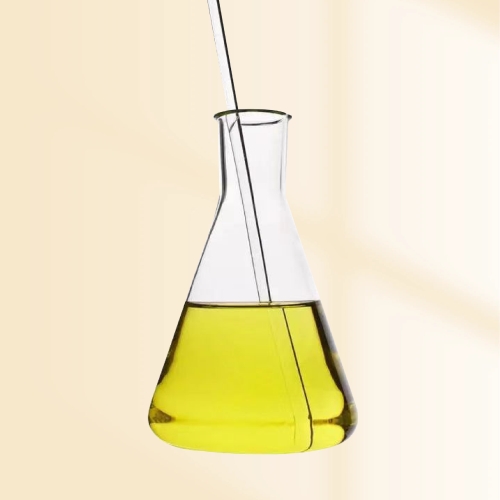
تم بناء BFP New Material على مواد خام عالية الجودة لجميع مستحضرات التجميل وحلول مصممة خصيصاً فقط لاحتياجات الصيغة الخاصة بك. سواء كان إدخال مجموعة من منتجات العناية بالشمس التي لا تحتوي على فلاتر عالية التهيج مثل أوكتوكريلين أو تتطلب مستحلبات مستقرة متوافقة مع فلاتر المعادن مثل أكسيد الزنك ، فقد تم تخصيص مطابقة المكونات من قبلنا لتتناسب مع متطلبات أسواقك المستهدفة.
حلولنا هي:
مزيجات فلتر الأشعة فوق البنفسجية القابلة للتخصيص
المواد السطحية النشطة الحساسة لتصميم المنتجات للبشرة الحساسة
مستحلبات واقية من الشمس للأنظمة المقاومة للماء، مصممة خصيصا
أنظمة الحفاظ المعترف بها دولياً
نحن نساعد R & amp; مجموعة D عالميا مع دعم الوثائق التقنية وتوصيات الصيغة لكل طلب - كل دفعة لمواصفاتك من خلال برنامج الخدمة المخصص لدينا.
معلومات عنا
شنغهاي BFP المواد الجديدة Coالمحدودة هي شركة تركز على المواد الخام المضادة للشيخوخة لرعاية الشمس وبعض التطبيقات الصناعية. المنتج يشمل بشكل رئيسي الأشعة فوق البنفسجية الممتصة ، فلاتر الأشعة فوق البنفسجية العضوية ، فلاتر الأشعة فوق البنفسجية المعدنية (نانو وغير نانو ثاني أكسيد التيتانيوم ، أكسيد الزنك ، السائل المتشتت والمنتجات المخصصة) ، مسحوق التبييض ومضادات الأكسدة ، مع استخدام هذه المنتجات نهدف إلى تحسين وإطالة المظهر ومضادات الأكسدة وظيفة الناس والمنتجات النهائية لجعل حياتنا أكثر رائعة.
تحدد مواقع الإنتاج الخاصة بنا في جزء مختلف من الصين ، الذي نقدم حاليًا في Tianjin و Shandong و Jiangsu و Hubei Province لإنتاج سلسلة منتجات مختلفة ، جميع هذه النباتات تجلس في الحديقة الكيميائية مع ورشة عمل نظيفة وبعضها معتمد من GMP ، ومزودة بتعليقات مختبر متقدمة.
factory.png
للحصول على أوراق البيانات التقنية أو العينات أو المساعدة في صياغة BFP-SP-M ، اكتب إلى SHBFPL’ فريق الدعم التقني لخدمة شخصية.
أسئلة متكررة
س: هل أوكتوكريلين آمن للاستخدام اليومي؟
ج: نعم ، عند استخدامها بكميات صغيرة (تصل إلى 10٪) ، فهي غير ضارة تقريبا ؛ ومع ذلك، يجب على شخص لديه بشرة حساسة أن يكون حذرا ومراقبة الحساسية مع الاستخدام الطويل بسبب خطر التعرض التراكمي.
س: هل يمكنني استخدام واقي الشمس أوكتوكريلين إذا كنت مصابة بالإكزيما؟
ج: من الناحية المثالية ، قم بزيارة طبيب أمراض الجلد أولاً لأن الأكزيما تجعل وظيفة حاجز الجلد ضعيفة ، وسوف يكون الأفراد أكثر عرضة للتحسيس ببعض واقيات الشمس الكيميائية مثل الأوكتوكريلين.
س: ما هي علامات التحذير التي I’ هل لدي رد فعل سيء على كريم الشمس الخاص بي؟
ج: العلامات والأعراض المعتادة هي الاحمرار أو الحكة أو اللغز عند الاتصال أو الطفح الجلدي المتأخر عند التعرض للشمس ، مما يشير إلى التهاب الجلد الحساسي المحتمل.
س: هل هناك بدائل أكثر أمانا لأكتوكريلين؟
ج: نعم - تعتبر واقيات الشمس المادية مثل أكسيد الزنك خيارات جيدة ، مصممة خصيصاً للأطفال أو المستهلكين الحساسيين لأنها ليست كثيفة الاختراق عبر الجلد ولا تشكل منتجات ثانوية تفاعلية بعد التعرض للشمس.
س: هل توفر BFP New Material مكونات واقي الشمس الحساسة للبشرة؟
ج: نعم - لدينا خيارات مكونات مخصصة تتراوح من مستحلبات غير مهيجة إلى المواد النشطة الداعمة للمعادن التي من شأنها أن تعمل بشكل جيد مع خطوط الجلد الحساسة التي تجذب المستهلكين الحساسين.

